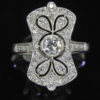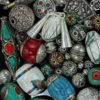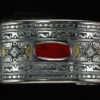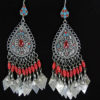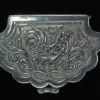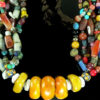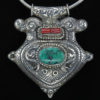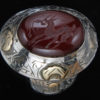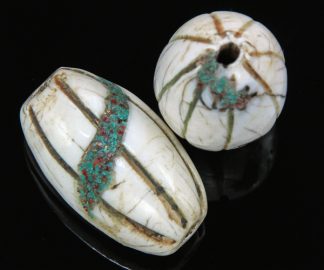When discussing silver gold and metals in tribal jewellery, or any jewellery piece, perhaps the first point to make is that rarely is there just one pure metal. The metal is usually an alloy, which is a combination of several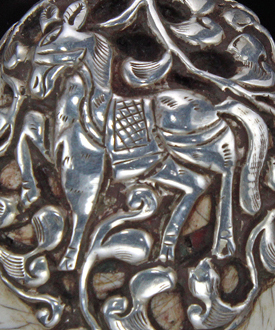 metals. For example, if the metal is silver this usually means it is made from a combination of silver with smaller amounts of copper and nickle. Generally, tribal jewellery is made with “white metal” which has a silver content that can vary massively. Rare collectible pieces can be valuable even when made from white metal with no silver content. However, generally the better quality pieces are made with a high silver content. This is often as high 80% silver, sometimes stamped as “800,” or as high or higher than 92.5% silver which is Sterling grade, (the Britsh standard), silver and is usually stamped “925”
metals. For example, if the metal is silver this usually means it is made from a combination of silver with smaller amounts of copper and nickle. Generally, tribal jewellery is made with “white metal” which has a silver content that can vary massively. Rare collectible pieces can be valuable even when made from white metal with no silver content. However, generally the better quality pieces are made with a high silver content. This is often as high 80% silver, sometimes stamped as “800,” or as high or higher than 92.5% silver which is Sterling grade, (the Britsh standard), silver and is usually stamped “925”
With a few exceptions, gold is not prominent in historical tribal jewellery and was not considered as valuable as silver. Understandably in more recent times with gold holding such a high worldwide value, it has become a dominant store of wealth, especially among more affluent city dwelling ethnic groups. India is the world’s biggest consumer of gold for this reason.
Understandably it is important that one is able to establish the precious metal content of a piece before purchasing it. While the price of a piece will be influenced by many factors 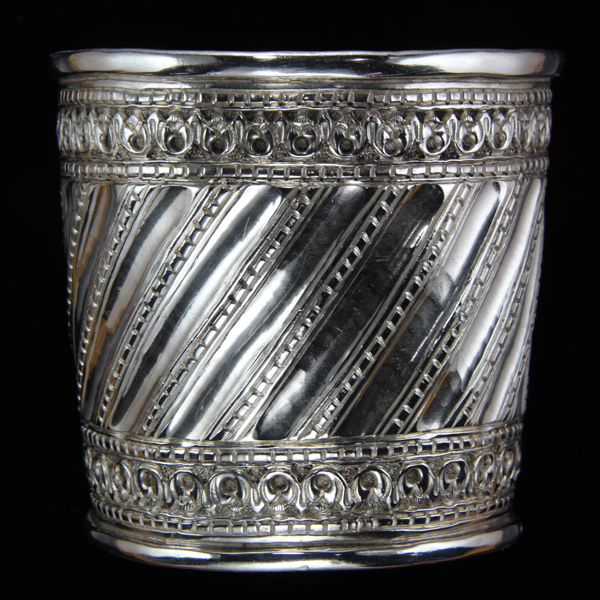 such as age, rarity, quality, complexity in making, gem content, attractiveness and wearability the precious metal content is also important. As I have said better quality pieces are usually made with a high silver content and while there are plenty of genuine good quality non-silver pieces on the market a buyer needs to be aware that there is also an abundance of super cheap, mass-produced base metal copies which are simply not authentic tribal jewellery.
such as age, rarity, quality, complexity in making, gem content, attractiveness and wearability the precious metal content is also important. As I have said better quality pieces are usually made with a high silver content and while there are plenty of genuine good quality non-silver pieces on the market a buyer needs to be aware that there is also an abundance of super cheap, mass-produced base metal copies which are simply not authentic tribal jewellery.
Most people know that gold is referred to as 9 or 10 carats, 14 carats, 18 carats and 24-carat gold. When discussing gold the word carat refers to the purity or the amount of gold in the metal. However when discussing diamonds and other gemstones a carat refers to the weight of the gem, 5 carats = 1gram. 24-carat gold is pure gold, therefore 9-carat gold is 9 parts out of 24 or 9 /24 or if divided down 3/8. So 9 carat, (9ct), gold metal has a gold content of only three eights or less than half. Instead of the stamp 9ct you will often see the stamp 375 which refers to the fact that the metal is 375 parts gold per 1,000 parts of total metal, i.e. 375/100o which is the same as 3/8. Similarly 14ct gold is 14 parts gold out of a possible 24, so a little over a half is gold, it is also denoted by the stamp 583.5. 18ct gold is 18/24 or 3/4, so 18ct gold is three-quarters pure gold or 75% and is often identified with the stamp 750.
nlike gold, silver purity/content is not identified by carats, it is identified as parts per thousand. The most common purity term for silver, recognized worldwide, is the British standard known as Sterling silver, it is recognized by the stamp 925. This is because the metal is 925 parts per thousand pure silver, or if you like, 92.5% pure silver. It is not common to find a stamp on silver metal which is less than 92.5% silver, however, the 800 stamp (80% pure silver) is the next most common. A wording of warning, just because a piece is stamped it does not mean that the stamp is accurate. However, in my experience it usually is. The opposite is also true, in fact most pieces of tribal jewellery are not stamped, however, they may still be made from 80% or more pure silver.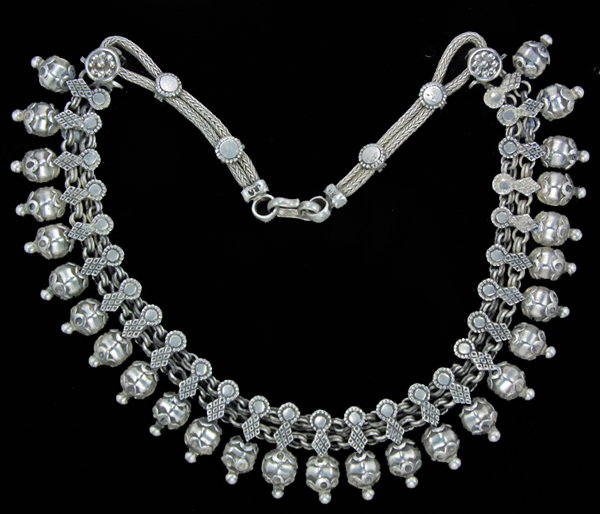
Much tribal jewellery is made from old pieces of jewellery or old coins melted down. The 18th Century Austrian coin the Maria Theresa Thaler, is well known for being used for this purpose, especially throughout the Maghreb (North Africa). In 1857 the Emperor of Austria declared the Maria Theresa Thaler, (MTT) to be official coinage for trade. It then soon lost its status as currency for Austria and became a currency for world trade, (similar to the US$ today), and mints outside Austria began producing it. In all some 389 million MTT were minted between 1752 and 2000. The MTT was 83.3% pure silver. As a consequence much older tribal jewellery contains around 80% pure silver.
Be wary of pieces described as German silver, native silver, tribal silver, nickel silver, alpaca silver and other such names. These names are deceptive because usually the pieces actually contain no silver. The pieces are made from “white metal” For example German silver typically consists of 60% copper, 20% nickel and 20% zinc
You may also come across terms such as gold or silver plated, gold leaf, silver gilt and gold 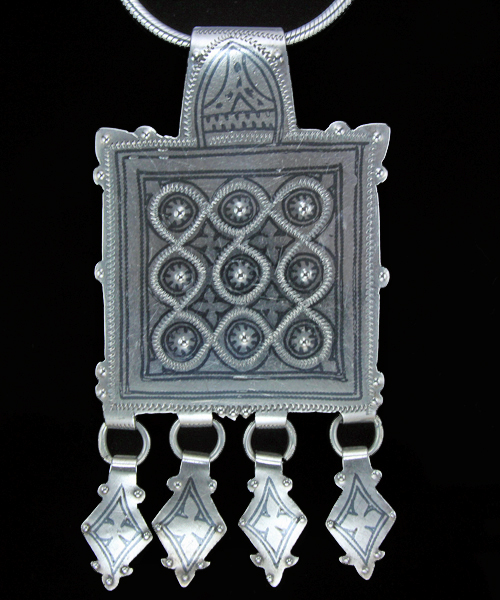 or silver wash. If these terms are being used accurately gold or silver plated refers to a thin layer of gold or silver adhered to a base metal. Gold leaf is a thinner layer of gold on base metal while silver gilt refers to a thin layer of gold adhered to sterling (925) silver. Gold or silver wash refers to a very thin cover of silver or gold adhered to silver or base metal.
or silver wash. If these terms are being used accurately gold or silver plated refers to a thin layer of gold or silver adhered to a base metal. Gold leaf is a thinner layer of gold on base metal while silver gilt refers to a thin layer of gold adhered to sterling (925) silver. Gold or silver wash refers to a very thin cover of silver or gold adhered to silver or base metal.
Your comments and or questions are most welcome.

